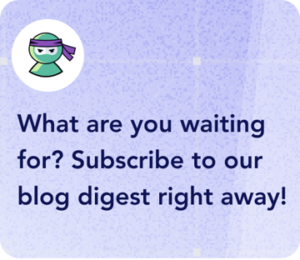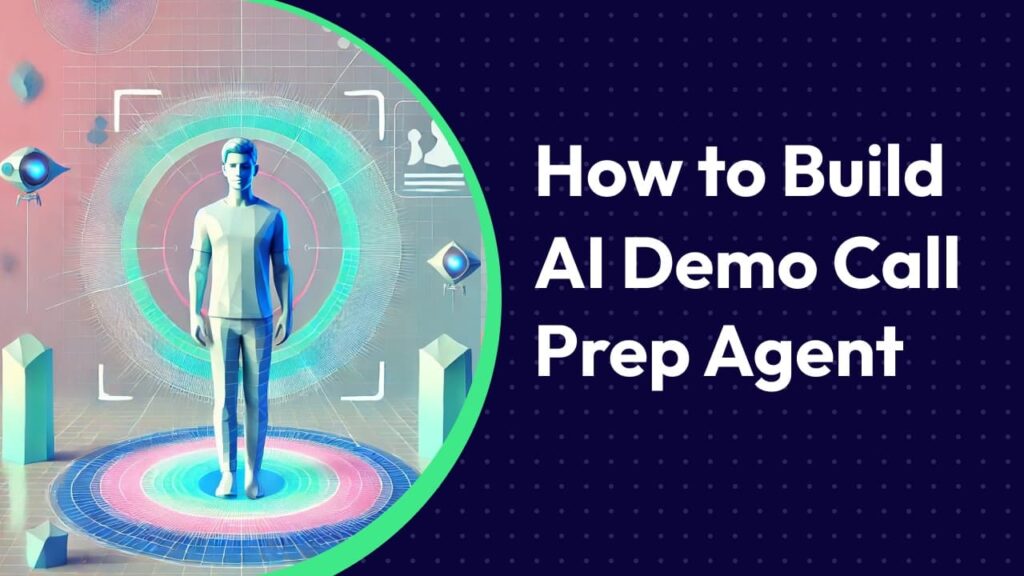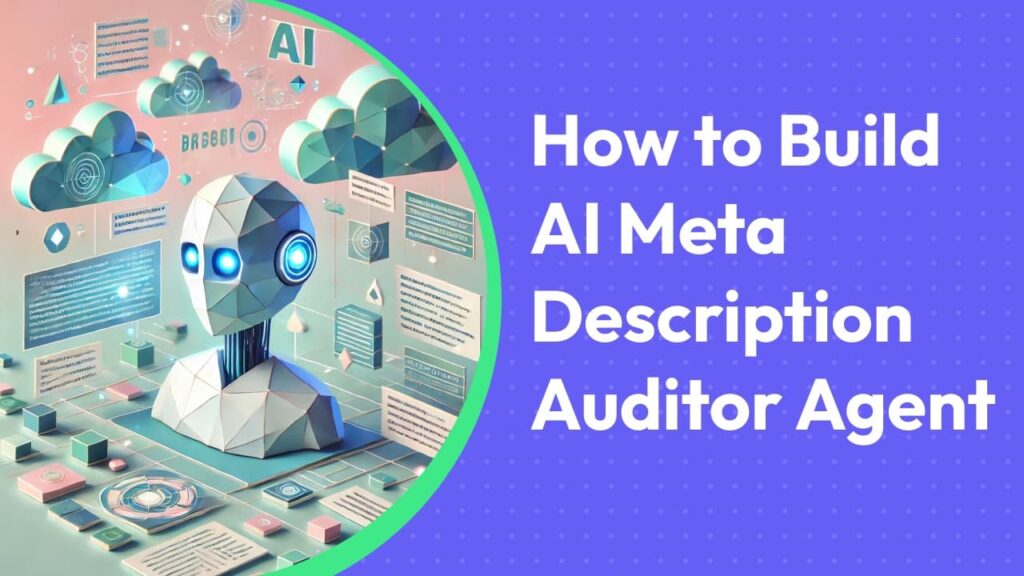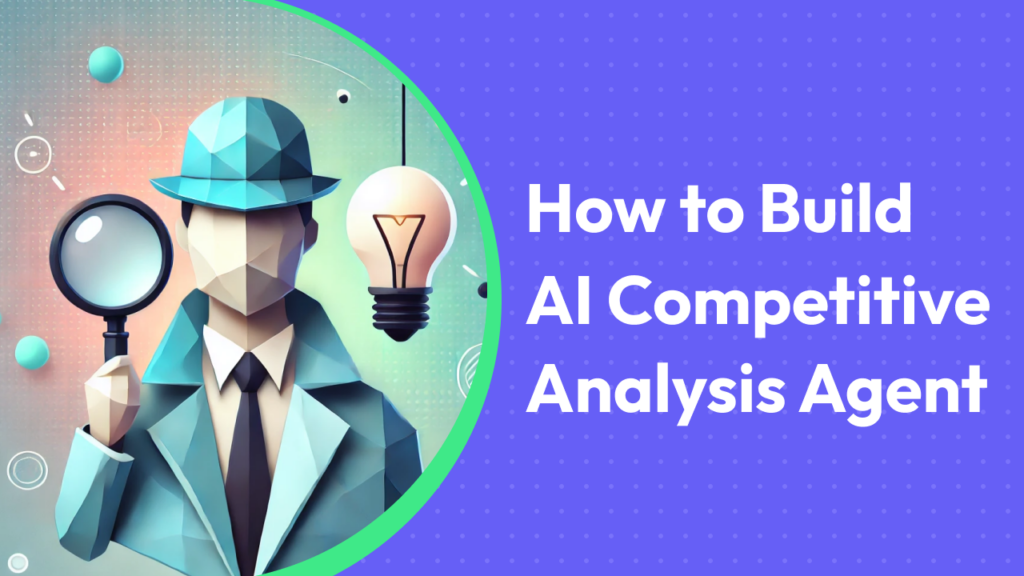Are you tired of answering the same questions after every lecture?
It’s a familiar scenario: students constantly reach out for clarifications, consuming precious hours that could be better spent on more meaningful tasks. In fact, research shows that teachers face an average of 11.9 interruptions per day, often repeating the same explanations over and over. This not only drains time but also leads to frustration for both educators and students.
But what if there was a way to eliminate this repetitive cycle?
Enter the AI Learning Assistant—a game changer for modern education. Unlike traditional chatbots that are limited to basic scripts, this advanced AI tool can interact with students in a meaningful way, answering questions, providing explanations, and offering personalized support.
And the best part?
95% of students prefer getting information from a bot, according to research.

By implementing an AI assistant, you can reduce the burden on your staff by 43%, allowing them to focus on more impactful aspects of teaching. It’s not just automation, it’s a smarter, more efficient way to manage student support while improving the learning experience.
Ready to transform your classroom?
Let’s dive in!
Step 1: Begin Your AI Journey
Sign up or Login Omnimind.ai and start creating your first AI Agent! Click on the “Get started” button in the Create AI Agent section.
You’ll see a friendly interface that guides you through building your own AI assistant. Perfect for creating a knowledgeable mentor who understands your course materials!
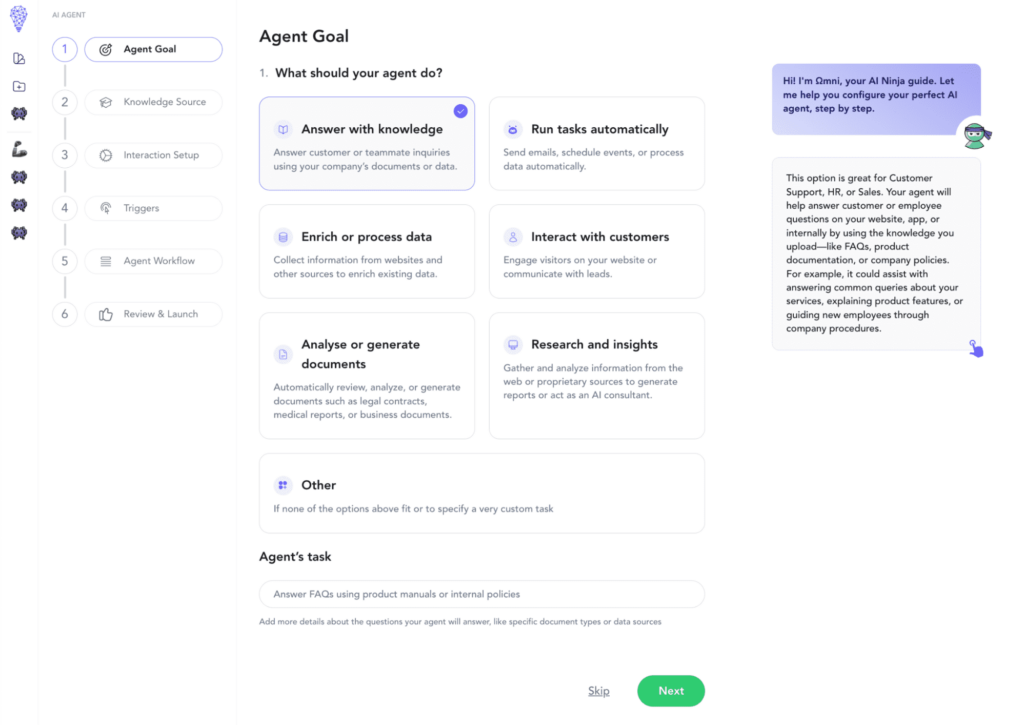
Step 2: Define Your Agent’s Purpose
Let’s set your bot’s mission! Select “Answer with knowledge”—this is perfect for helping students understand course materials and lectures. Your bot will be able to:
- Answer questions about video lectures
- Explain concepts from presentations
- Help with course material comprehension
- Provide relevant examples from uploaded content

Step 3: Choose Your Integration Needs
For our course mentor bot, let’s keep it focused on your teaching materials. Select, “No, my agent doesn’t require any integrations.” This setup is perfect for handling questions about lectures and course content using just your uploaded materials.
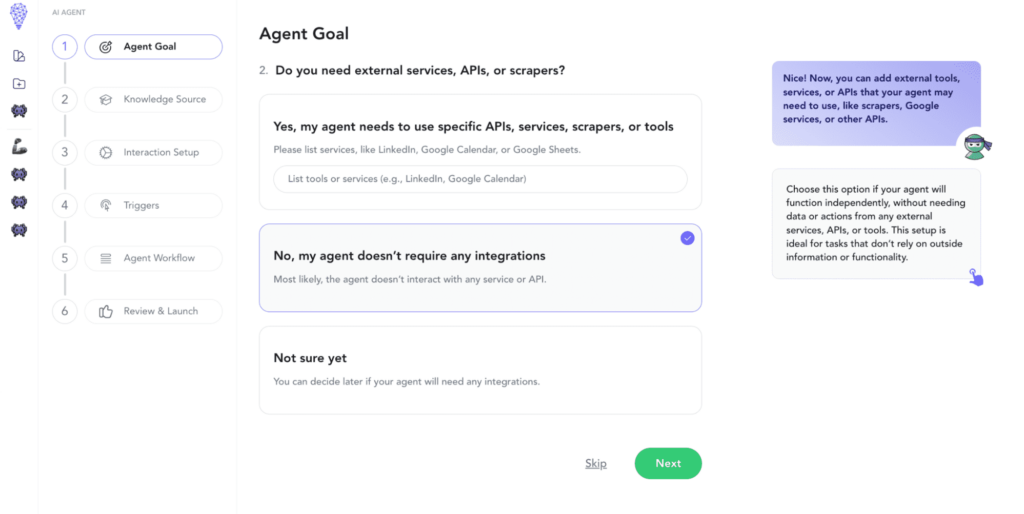
Step 4: Set Up Your Data Access
When asked about accessing specific data, select “Yes, my agent needs to use my own data, documents, websites.” This is crucial because your bot will need to understand:
- Video lecture content
- Course presentations
- Required reading materials
- Study guides and notes
- Supporting educational resources
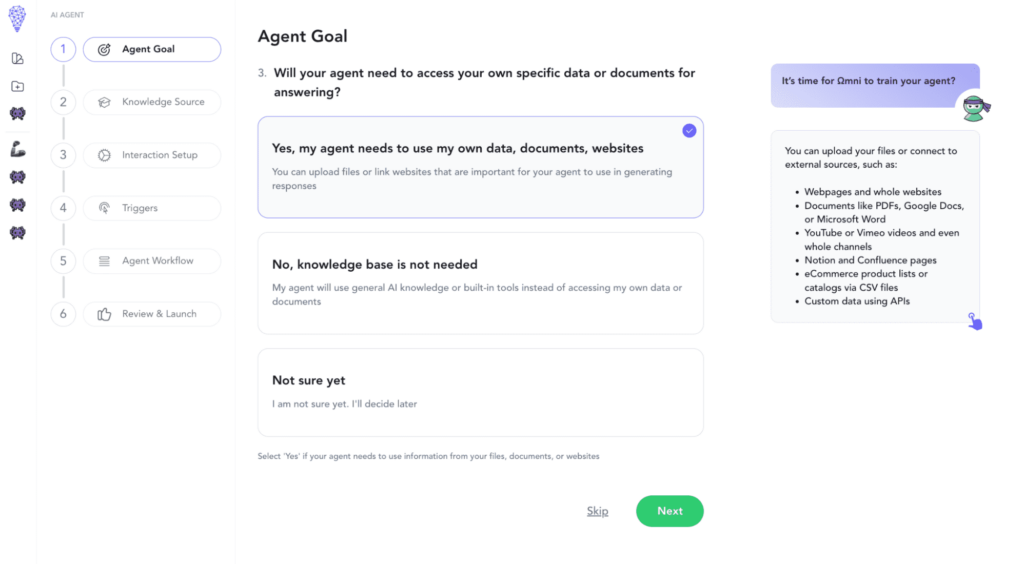
Step 5: Choose Your Interaction Channel
Your students need easy access to help! Choose “Through a website or app” for embedding the chat right in your learning management system. Alternatively, if your class uses Slack or WhatsApp for discussions, you can integrate it there too!
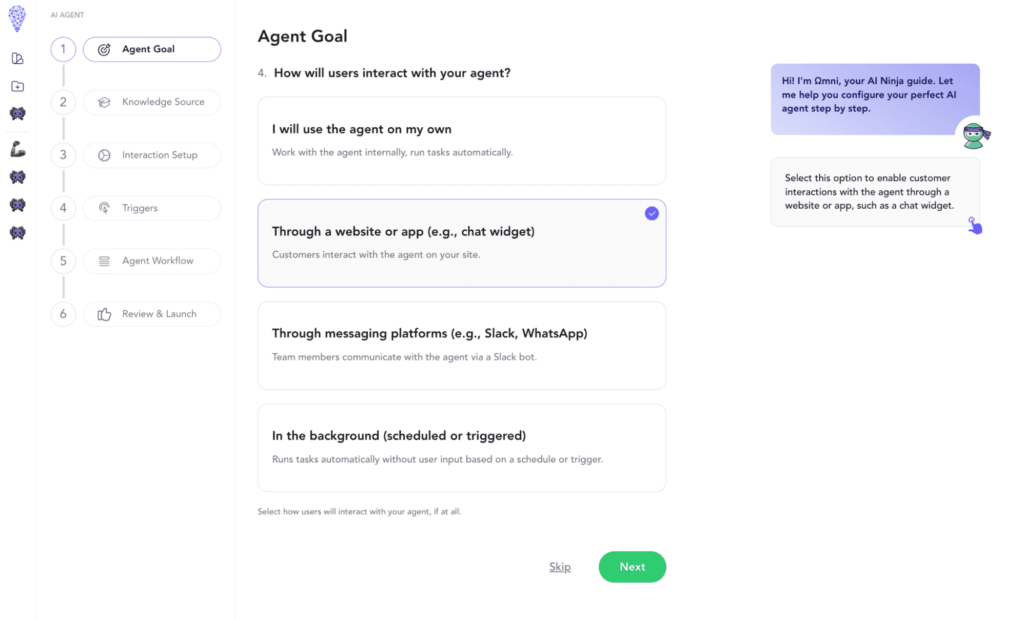
Step 6: Give Clear Instructions
Time to tell your bot exactly what it needs to do. Write something like: “Help enrolled students understand course materials by answering questions about video lectures, explaining concepts from presentations, and providing relevant examples from course content.”
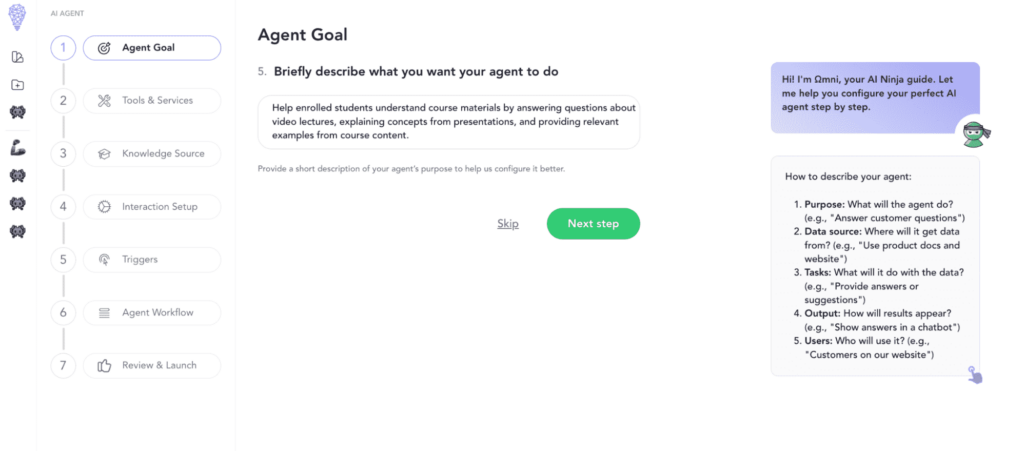
Step 7: Select Your Tools & Services
Let’s enhance your mentor bot with some powerful tools! In the Tools & Services section, you’ll want to select:
- LLM—Perfect for generating clear explanations and summaries of complex course concepts
- Website Content Extractor—Great for pulling information from your course websites and online resources
- Google Sheets—Useful for managing and accessing structured course data like schedules or grade rubrics
You can also explore other helpful tools like:
- Google Calendar for managing study sessions
- Gmail Email Sender for automated study reminders
- Google Search for finding additional learning resources
Choose the tools that best match your teaching style and course needs. Each one adds new capabilities to help your students better understand the course material!
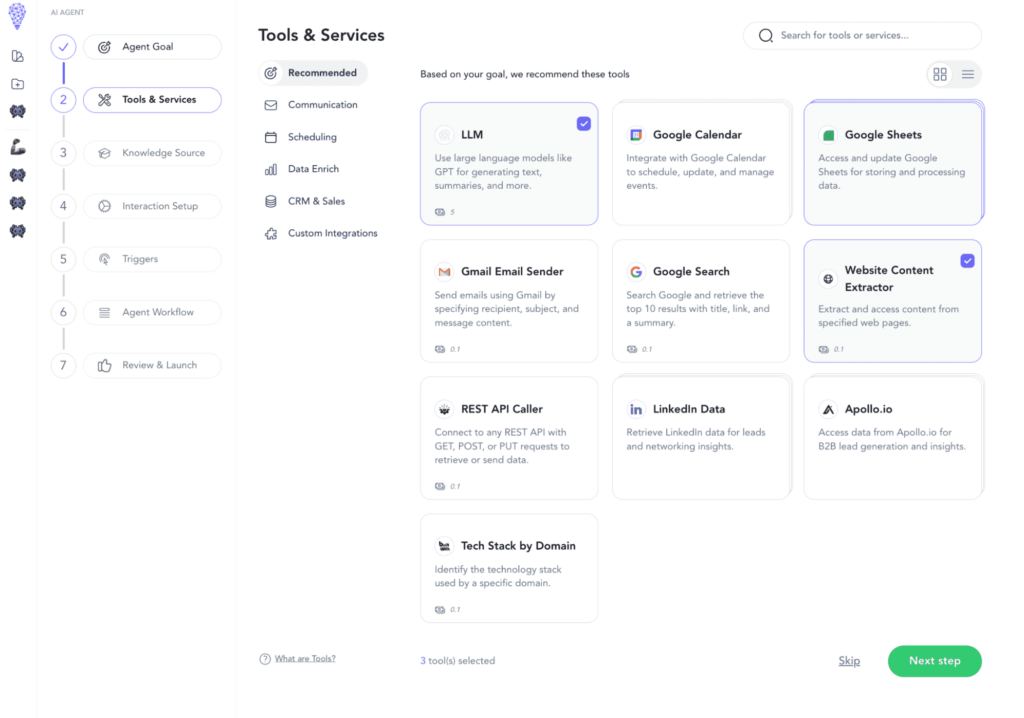
Step 8: Upload Your Course Materials
Now for the important part—giving your bot access to all your teaching materials:
- Upload video lecture transcripts
- Add presentation slides
- Include course documentation
- Upload supplementary materials
This is what makes your bot truly knowledgeable about your specific course content!
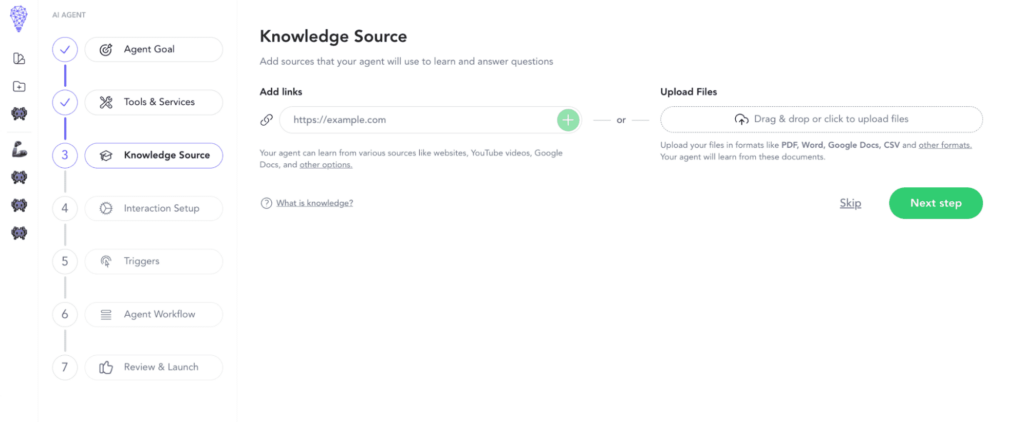
Step 8: Set Up Chat Interface
Choose how your students will interact with the bot:
- Standard Chat—Great for detailed explanations about lecture content
- Popup Chat—Perfect for quick questions during study sessions
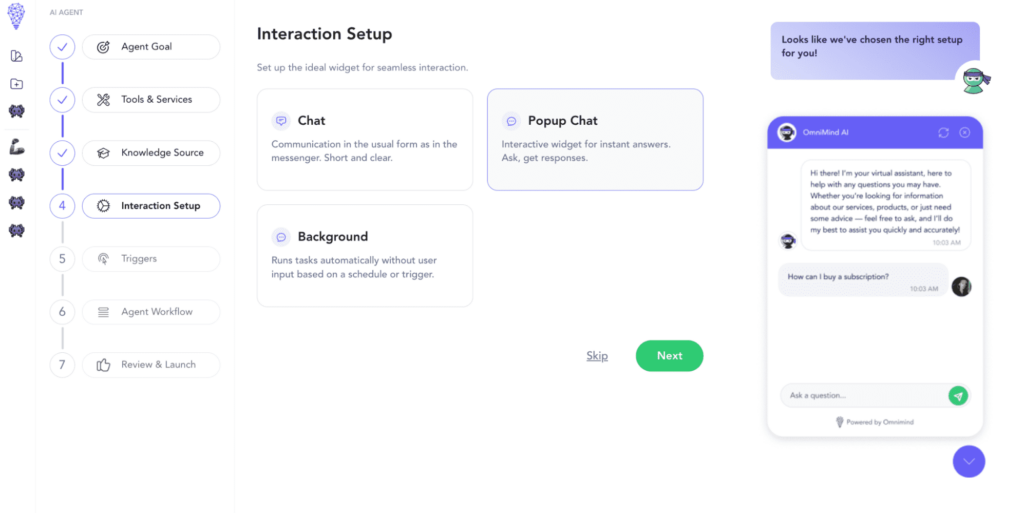
Step 9: Configure Triggers (Optional)
While your bot will primarily respond to student questions about course materials, you can also set up helpful automated interactions:
- Scheduled lecture reminders
- Regular study tips based on course content
- Post-lecture check-ins
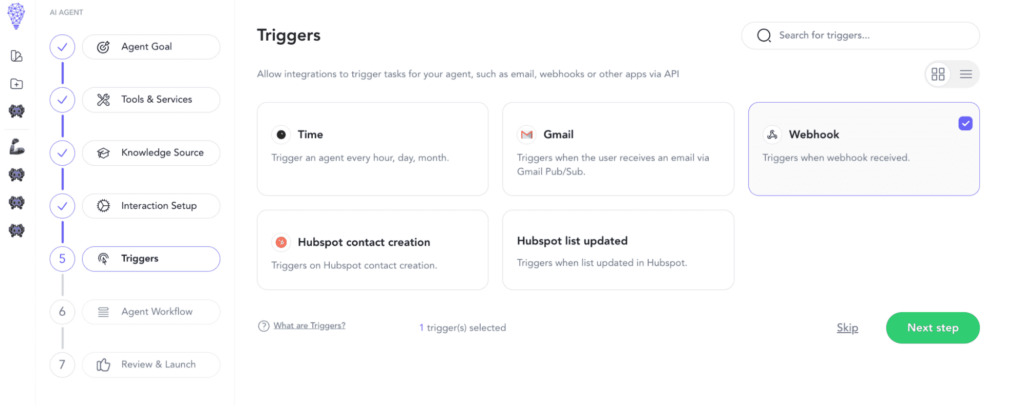
Step 10: Review Your Workflow
Your course mentor bot will follow these steps:
- Receive Inquiry—Listen for questions about lectures and materials
- Retrieve Information—Search through your uploaded course content
- Provide Response—Give clear explanations using relevant examples
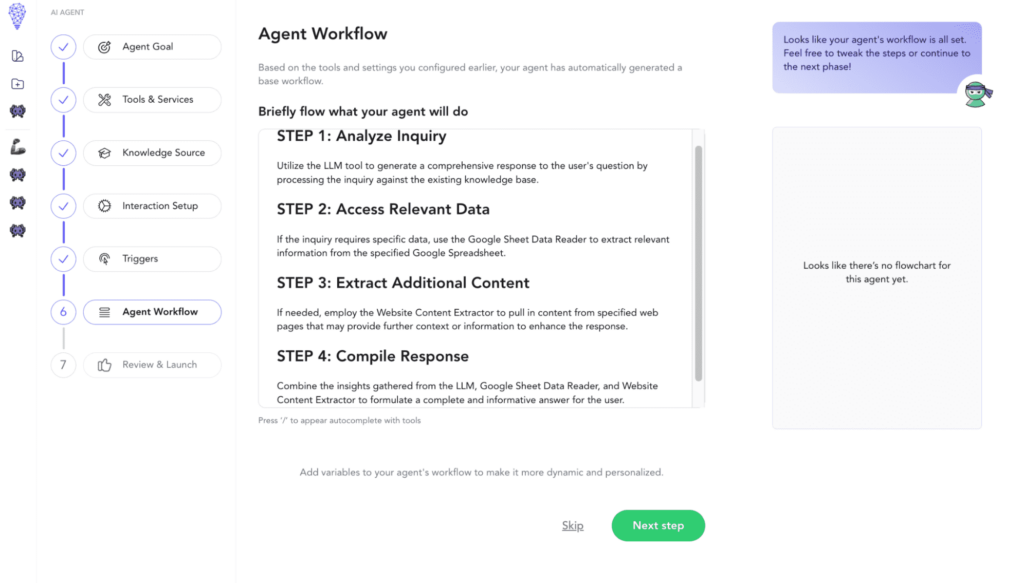
Step 11: Final Configuration and Launch
We’re at the last step! Let’s give your educational assistant its final touches:
- Name and Identity:
- Choose an appropriate icon that represents learning/education
- Name your bot “Education Mentor Agent” or something that reflects its role
- Make sure the name is clear and approachable for students
- Configure Your Selected Tools:
- LLM Settings
- Choose your preferred model (OpenAI, Anthropic, etc.)
- Configure response style to be educational and helpful
- Set appropriate knowledge parameters for course content
- Google Sheet Data Reader
- Connect to your course spreadsheets
- Link class schedules and timetables
- Set up access to assignment deadlines
- Connect grade rubrics if applicable
- Website Content Extractor
- Configure for your learning management system
- Set up access to course web pages
- Enable syllabus and resource page scanning
- LLM Settings
- Review Your Complete Setup:
- Agent Type: Answer with knowledge
- Tools Connected: LLM, Google Sheet Data Reader, Website Content Extractor
- Knowledge Sources: Ready for your course materials
- Interaction Widget: Popup Chat
- Triggers: Webhook enabled for automated responses
Once everything is configured, hit that Launch button and your AI teaching assistant will be ready to help your students!
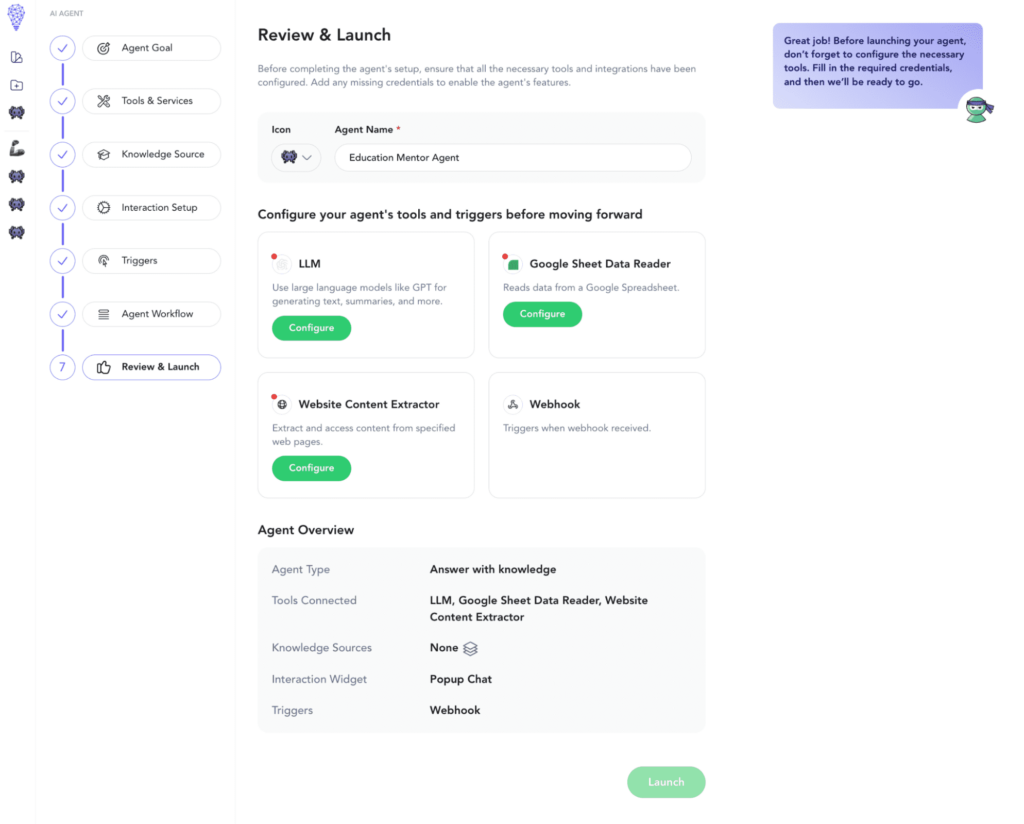
Leveraging an AI Learning Assistant is not just a luxury—it’s a necessity for modern education.
By automating the repetitive task of answering common questions, you free up valuable time for both teachers and students, creating a more efficient and focused learning environment.
This technology doesn’t just lighten the load for your staff—it transforms the way students engage with course materials, providing instant, personalized support whenever they need it.Ready to reduce your staff workload, improve student satisfaction, and elevate the learning experience? The solution is simpler than you think—start building your AI Learning Assistant today!

How useful was this post?
Click on a star to rate it!
Average rating 5 / 5. Vote count: 1
No votes so far! Be the first to rate this post.

